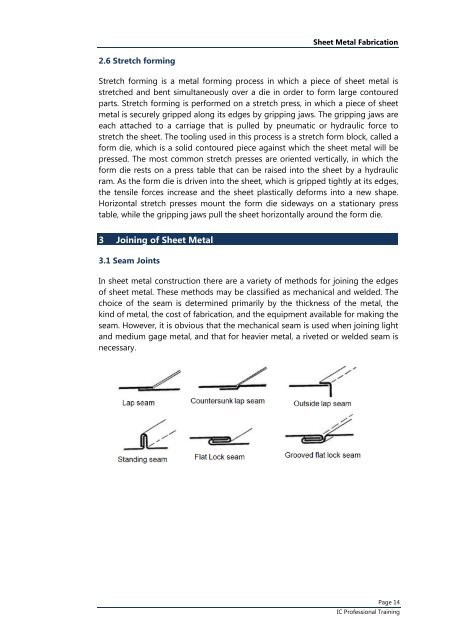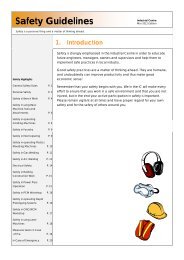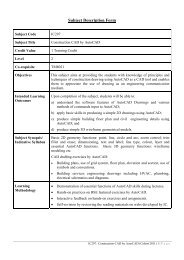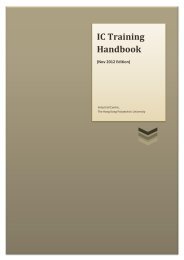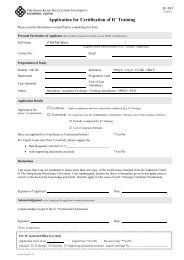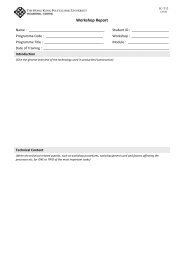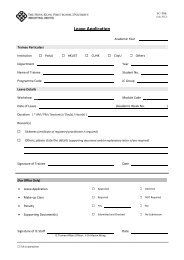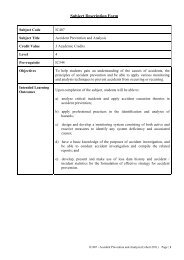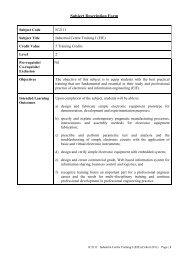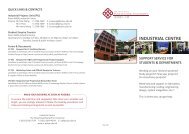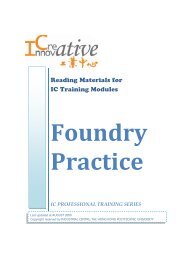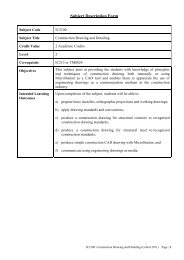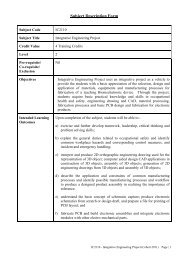Sheet Metal Fabrication - The Hong Kong Polytechnic University
Sheet Metal Fabrication - The Hong Kong Polytechnic University
Sheet Metal Fabrication - The Hong Kong Polytechnic University
You also want an ePaper? Increase the reach of your titles
YUMPU automatically turns print PDFs into web optimized ePapers that Google loves.
<strong>Sheet</strong> <strong>Metal</strong> <strong>Fabrication</strong><br />
2.6 Stretch forming<br />
Stretch forming is a metal forming process in which a piece of sheet metal is<br />
stretched and bent simultaneously over a die in order to form large contoured<br />
parts. Stretch forming is performed on a stretch press, in which a piece of sheet<br />
metal is securely gripped along its edges by gripping jaws. <strong>The</strong> gripping jaws are<br />
each attached to a carriage that is pulled by pneumatic or hydraulic force to<br />
stretch the sheet. <strong>The</strong> tooling used in this process is a stretch form block, called a<br />
form die, which is a solid contoured piece against which the sheet metal will be<br />
pressed. <strong>The</strong> most common stretch presses are oriented vertically, in which the<br />
form die rests on a press table that can be raised into the sheet by a hydraulic<br />
ram. As the form die is driven into the sheet, which is gripped tightly at its edges,<br />
the tensile forces increase and the sheet plastically deforms into a new shape.<br />
Horizontal stretch presses mount the form die sideways on a stationary press<br />
table, while the gripping jaws pull the sheet horizontally around the form die.<br />
3 Joining of <strong>Sheet</strong> <strong>Metal</strong><br />
3.1 Seam Joints<br />
In sheet metal construction there are a variety of methods for joining the edges<br />
of sheet metal. <strong>The</strong>se methods may be classified as mechanical and welded. <strong>The</strong><br />
choice of the seam is determined primarily by the thickness of the metal, the<br />
kind of metal, the cost of fabrication, and the equipment available for making the<br />
seam. However, it is obvious that the mechanical seam is used when joining light<br />
and medium gage metal, and that for heavier metal, a riveted or welded seam is<br />
necessary.<br />
Page 14<br />
IC Professional Training


